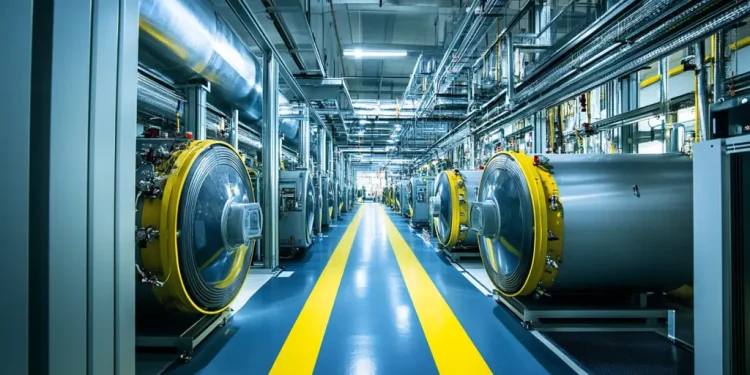In the ever-evolving world of technology, energy consumption is one of the biggest challenges facing large companies. Particularly, businesses like Google, which operate vast data centers, are constantly in search of sustainable and reliable energy sources. Recently, in a bid to address these challenges, Google has signed a groundbreaking agreement with Kairos Power to utilize nuclear micro-reactors. But while this development promises a greener future, experts say the optimistic timeline of 2030 might be a bit too hopeful.
Nuclear micro-reactors are small, factory-built reactors that can provide electricity in a more flexible and safer way than the large conventional nuclear power plants. They are designed to be modular, which means they can be built in a factory setting and then transported to their final destination. This makes them a relatively faster option to deploy when compared to traditional nuclear reactors. Their compact size and innovative design offer enhanced safety and security features, which are critical for densely populated areas or sensitive locations such as data centers.
Google’s Sustainable Energy Goals
Google, like many tech giants, has ambitious environmental goals. The company has been operating on 100% renewable energy since 2017 and aims to run all its data centers and offices using carbon-free energy 24/7 by the year 2030. With increasing global data traffic, data centers already consume about 1% of the world’s electricity — a figure expected to rise substantially. Thus, the move towards nuclear micro-reactors represents a strategic step toward reducing the carbon footprint and meeting energy demands without relying solely on solar or wind power, which can be inconsistent.
Kairos Power and Its Innovation
Kairos Power is a pioneering company in the development of advanced nuclear reactor technology. The micro-reactors they are developing are based on a unique fluoride salt-cooled high-temperature reactor design, which promises to be more efficient and safer. The company’s vision is to transform the energy landscape by making advanced nuclear technology cost-competitive with fossil fuels. The partnership with Google signifies a major advancement in this direction.
2020: A Closer Look at the Timeline
While the project is indeed promising, industry experts express some reservations about the 2030 timeline set by Google and Kairos. Nuclear technology, especially new concepts like micro-reactors, face significant regulatory, technical, and manufacturing challenges before they can be deployed at scale. It’s not uncommon for nuclear projects to encounter delays due to the rigorous safety tests and regulatory requirements necessary to ensure public and environmental safety.
Furthermore, constructing the infrastructure to support these reactors and integrating them seamlessly with existing grid systems also presents a considerable challenge. It’s for these reasons that some analysts view the 2030 deadline as a very optimistic goal rather than a guaranteed outcome.
The Impact on Future Energy Solutions
This innovative endeavor could potentially become a cornerstone for future energy solutions, offering a reliable and sustainable option that could revolutionize how large-scale operations like data centers are powered. If successful, it could encourage other tech companies and industries to explore similar partnerships, ultimately contributing to the wider adoption of advanced nuclear technologies.
For individuals who are not tech-savvy or elderly, this means a shift towards cleaner energy that could help preserve our planet for future generations. Though the timeline is ambitious and may stretch beyond 2030, initiatives like these hold promise for a world that moves away from fossil fuels towards a more sustainable energy landscape.










